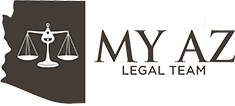Chapter 13 Bankruptcy
Chapter 13 Bankruptcy
What is chapter 13 bankruptcy? How does it differ from 7?
People accrue debt for many reasons, be it, medical bills, unemployment, marital problems, or just plain bad luck. Despite the different reasons people accumulate debt Chapter 13 Bankruptcy offers a person a scheduled plan to help rework and organize their debt into a manageable and workable situation.
A chapter 13 bankruptcy enables individuals with a regular income to develop a plan to repay all or part of their debts. This is different than Chapter 7 which allows a lower income individual to discharge their debt at the price of liquidating most of their assets. Under this chapter, debtors propose a repayment plan to make installments to creditors over three to five years and are able to retain more assets than if they were in a Chapter 7 Bankruptcy.
If the debtor’s current monthly income is less than the applicable Arizona median, the plan will be for three years unless the court approves a longer period. If the debtor’s current monthly income is greater than the applicable state median, the plan generally must be for five years. In no case may a plan provide for payments over a period longer than five years.
Do I qualify for chapter 13 bankruptcy? What are the criteria?
Any individual, even if self-employed or operating an unincorporated business, is eligible for chapter 13 relief as long as the individual’s unsecured debts are less than $360,475 and secured debts are less than $1,081,400 (These numbers are subject to change and we will update them as soon as possible if and when they do).NOTE: This Chapter is only eligible to individuals, business entities or corporations are not eligible.
There are a few more restrictions that you need to be aware of. An individual cannot file under chapter 13 or any other chapter if, during the preceding 180 days, a prior bankruptcy petition was dismissed due to the debtor’s willful failure to appear before the court or comply with orders of the court or was voluntarily dismissed after creditors sought relief from the bankruptcy court to recover property upon which they hold liens. No individual may be a debtor under chapter 13 or any chapter of the Bankruptcy Code unless he or she has, within 180 days before filing, received credit counseling from an approved credit counseling agency.
What happens after I file? What is the next step in chapter 13?
After individual files a chapter 13 petition, an impartial trustee is appointed to administer the case. The chapter 13 trustee will serve as the person who collects payments from the debtor and makes the distributions to creditors.
Your Attorney will file a proposed plan as to how you are going to repay the debt over 3-5 years depending on your individual circumstances.
Between 20 and 50 days after the debtor files the chapter 13 petition, the chapter 13 trustee will hold a meeting of creditors. The debtor must attend the meeting and answer questions regarding his or her financial affairs and the proposed terms of the plan. The parties typically resolve problems with the plan either during or shortly after the creditors’ meeting.
After the meeting of creditors, the debtor, the chapter 13 trustee, and those creditors who wish to attend will come to court for a hearing on the debtor’s chapter 13 repayment plan. After which the Trustee will confirm your repayment plan and you can start repayment.
Your attorney will make sure that every form and document is provided and filled out correctly. Your attorney should also contact the trustee ahead of time to make sure that the plan will be workable and that all of the creditors will be satisfied. These steps by the attorney will not only speed up the process but also prevent any delays that that could delay the start of your repayment schedule.
Why is filing for chapter 13 bankruptcy in Tucson a good option for me?
Chapter 13 bankruptcy allows you to consolidate your monthly payments into one manageable sum, satisfying your unsecured debt through partial payment. In addition, mortgage arrearages and other deficient payments on secured property can be incorporated into your chapter 13 payment, allowing you a time period of 3-5 years to repay this debt.
But these are not the only reasons, there are other reasons as well. Chapter 13 bankruptcy allows you to keep assets not protected in chapter 7 bankruptcy. In addition, you may be able to prevent foreclosure or repossessions.
